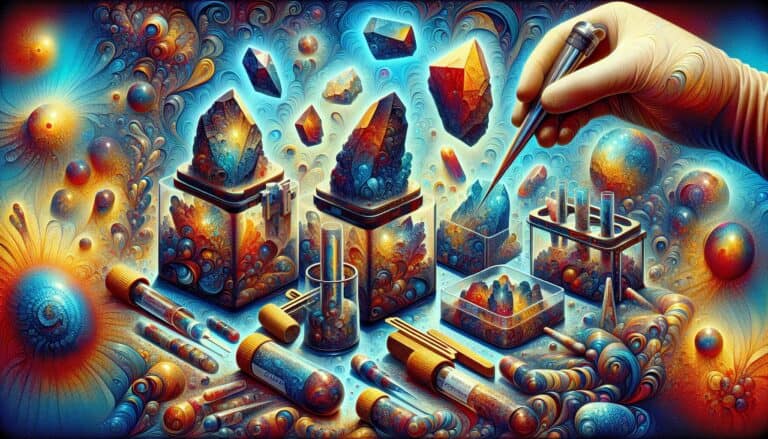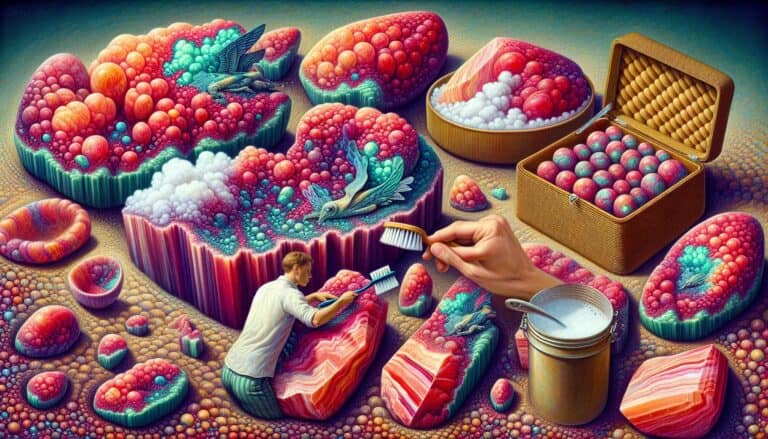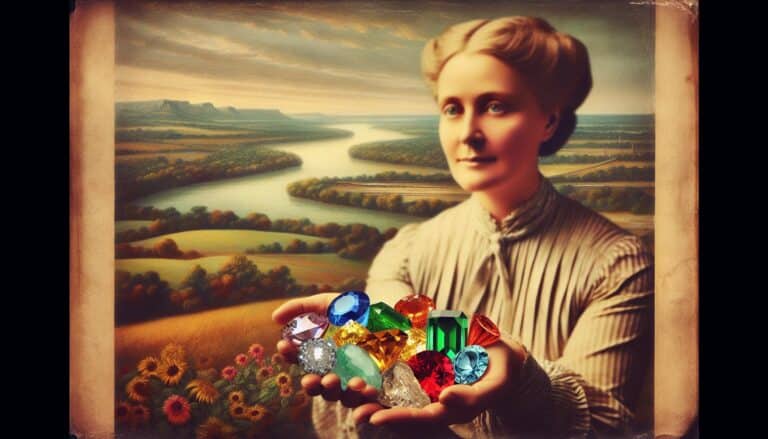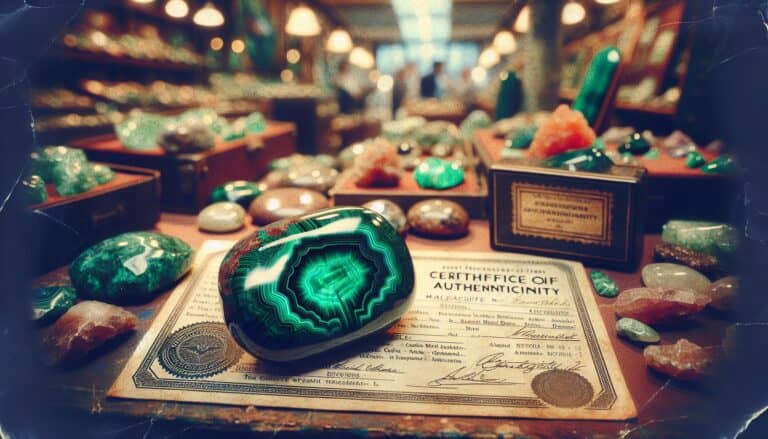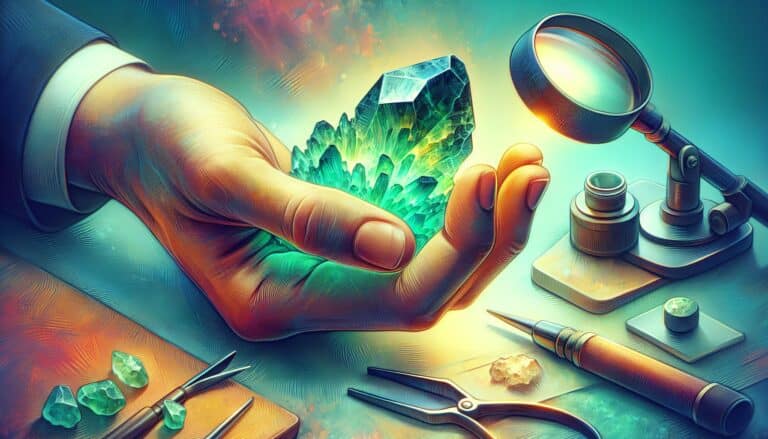Ever wondered if that sparkling gem in your jewelry is a zircon?
You’re not alone! Zircon, often confused with diamond due to its brilliance and fire, is a gemstone in its own right with unique features that set it apart. Learning to identify zircon can save you from mix-ups and help you appreciate your jewelry’s true nature.
Identifying zircon isn’t just for gem enthusiasts; it’s a skill that can enhance your understanding of gemstone quality and value. Whether you’re a collector, a jewelry lover, or simply curious, knowing the ins and outs of zircon identification can be both fascinating and practical.
Let’s dive into the world of zircon and uncover the secrets to recognizing this stunning stone.
To identify real zircon, look for its strong double refraction under magnification, indicative of its tetragonal crystal structure. Zircon shows a high refractive index and dispersion, giving it notable brilliance and fire. It’s also relatively hard (7.5 on Mohs scale), distinguishing it from softer simulants.
How to Identify Zircon Through Testing
When it comes to distinguishing zircon from other gemstones, there are several tests that can be conducted. Each test offers clues to a stone’s identity, allowing you to appreciate and value your gems more accurately.
Visual Inspection
First, examine the gem’s overall appearance. Zircon tends to have brilliant fire and a high refractive index, which means it’ll sparkle more than a standard glass or cubic zirconia. Look closely at the crystal structure. Zircon typically forms in tetragonal crystals, which can be a giveaway if you’re familiar with gemstone cuts.
The Streak Test
The streak test is straightforward. You’ll need a piece of unglazed porcelain. Simply drag the gem across the plate and observe the color of the streak it leaves. Zircon leaves a white streak, so if you’re seeing a different color, you may have a different mineral on your hands.
Magnet Test
While not foolproof, a magnet test can sometimes help. Zircon contains trace amounts of radioactive elements, which can make it mildly magnetic. If your gem is attracted to a magnet, this could indicate the presence of zircon, though further testing would still be necessary.
Hardness Test
Zircon falls around 7.5 on the Mohs scale of hardness. Test the gem by trying to scratch it with objects of known hardness. If it scratches glass (which is about 5.5) but is resistant to scratches from a steel file (about 6.5), you’re likely dealing with zircon.
Birefringence Test
One distinctive feature of zircon is its birefringence, or double refraction. When looking through the gem at a straight line, if the line appears double and slightly offset, this indicates high birefringence, characteristic of zircon.
Checking The Diaphaneity
Diaphaneity refers to a gemstone’s transparency or translucence. Zircon ranges from transparent to translucent. Hold the stone up to the light to check how much passes through. If it seems too opaque, you may want to question its authenticity.
Single or Double Refraction
To further check for double refraction, hold the gemstone over a single line of text. If the text appears as two lines when viewed through the gem, this confirms the presence of double refraction, a common property of zircon.
Refractive Index Test
The refractive index (RI) of zircon is quite high, typically between 1.810 and 2.024. Professional gemologists use a refractometer to measure RI, but you can send your gem to a lab if you don’t have access to one.
Finding The Specific Gravity
The specific gravity of zircon hovers around 4.0 to 4.7, higher than most other gemstones. To determine this, you’ll need specialized equipment to weigh the gem in air and in water, then calculate its density.
Identifying Zircons in the Field
If you’re a collector hunting for zircons in their natural setting, you’ll want to search in granite and metamorphic rock formations. These typically host zircon crystals, and their distinct luster and shape can often be recognized even without sophisticated tools.
Recognizing Potential Zircon Rocks
In the field, keep an eye out for rocks with high silica content, as zircon commonly forms in association with these minerals. Zircon crystals are often found in alluvial deposits and can exhibit a range of colors, from clear to dark red to smoky yellow, so don’t discount a stone based on color alone.
By understanding these testing methods and what to look for when identifying zircon, you’re better equipped to evaluate gems more accurately. Whether you’re assessing a stone’s quality or verifying authenticity, these tests can provide valuable insights into your gemstone’s true identity. Remember to handle all gemstones with care and consider consulting with a professional for conclusive identification.
Physical Characteristics of Zircon

When you’re scouting for zircons, there are distinct physical traits to keep an eye on. Zircons exhibit a wide range of colors, from transparent to a spectrum of blues, yellows, greens, and reds. Their color variations often reflect the presence of impurities, which can be a clue to their identification. Typically, colorless zircons have the highest value due to their similarity to diamonds.
The crystal structure of zircon is also a key identifier. Zircons crystallize in the tetragonal system which often results in elongated, prismatic crystals with pointed ends. Their crystals can be double-terminated with pyramid shapes at both ends, making them distinctive. The surface luster of zircon can range from vitreous to a brilliant sheen, comparable to diamonds, especially after cutting and polishing.
Zircon’s density, also known as specific gravity, is unusually high for a non-metallic mineral, sitting between 3.93 to 4.73. A simple heft test—feeling the weight of the stone in your hand—can hint whether it’s a zircon or not, as a zircon will typically feel heavier than other stones of the same size.
Alongside their striking visual appeal, zircons are relatively hard, rating 7.5 on the Mohs scale of hardness. This hardness lends zircons a level of durability conducive to various types of jewelry. Remember that although they’re hard, zircons can be brittle and prone to chipping, urging a need for careful handling during inspection and setting.
By familiarizing yourself with these characteristics, you’re better prepared to spot zircons during your gem hunting adventures. Remember to carry a jeweler’s loupe to examine the gemstones closely and verify any subtle nuances that signal a true zircon.
How Are Zircon Formed?
Zircon crystals are birthed from the crucible of Earth’s interior. They form as byproducts of volcanic activity, crystallizing from molten rocks known as magma during their cooling process. As magma cools, atoms of zirconium and silicon bond together to form the distinct tetragonal crystal structure characteristic of zircon.
Geological conditions such as temperature, pressure, and the presence of certain elements influence the formation and quality of zircon crystals. Their gestation period can span millions of years, a testament to their resilience and the slow-paced nature of geological time.
In sedimentary deposits, zircons are often found as small, rounded grains. These are weathered remnants from their host rocks, transported by water or wind. They settle in sediment beds, mingling with other minerals. Zircons from these environments tend to exhibit high clarity due to the natural refining process of erosion and transport.
Metamorphic rocks also house zircon gems. Here, zircons endure intense heat and pressure but maintain their structural integrity. This transformative environment can lead to changes in color and density as the gems adapt to new conditions.
Understanding where zircons are formed is paramount while you’re out identifying potential zircon sites. Bearing these geologic environments in mind empowers you to pinpoint locations where zircon might emerge.
Preparation for Zircon Hunting
Before you set out on your quest to find zircons, it’s imperative to be well-prepared. Proper preparation not only increases your chances of success but also ensures a safe and enjoyable gem hunting experience.
Gathering the Right Tools
To enhance your zircon hunting expedition, you’ll need to pack a toolkit with items designed for gemstone identification and extraction:
- Hand lens or magnifier: A crucial tool for close inspection of potential zircon specimens.
- Geologist’s hammer: Useful for chipping away at rocks to uncover hidden zircons.
- Tweezers: These help in handling small zircon crystals without dropping them.
- Field guide: Carrying a guidebook with illustrations aids in differentiating zircon from other minerals.
- Notebook and pen: Keep records of your findings for future reference.
- GPS or compass: Essential for navigation so you can easily find your way back.
- Safety goggles: Protects your eyes from flying debris while hammering rocks.
- Backpack: To carry all your tools and findings comfortably.
Each item serves a purpose and ensures you’re equipped to identify and collect zircons efficiently.
Safety Considerations
When embarking on a zircon hunting trip, your safety should be a top priority:
- Always inform someone about your plans, including your location and expected return time.
- Research the area you plan to explore to be aware of any potential hazards like wildlife or unstable terrain.
- Wear appropriate attire including a sturdy pair of boots, gloves, and a hard hat if necessary.
- Stay hydrated and bring along snacks for energy, especially if you’ll be out for long stretches.
- Check weather forecasts to avoid being caught in adverse conditions.
By paying attention to these safety measures, you ensure that your focus remains on finding zircons rather than dealing with preventable mishaps.
Handling and Care of Found Zircon
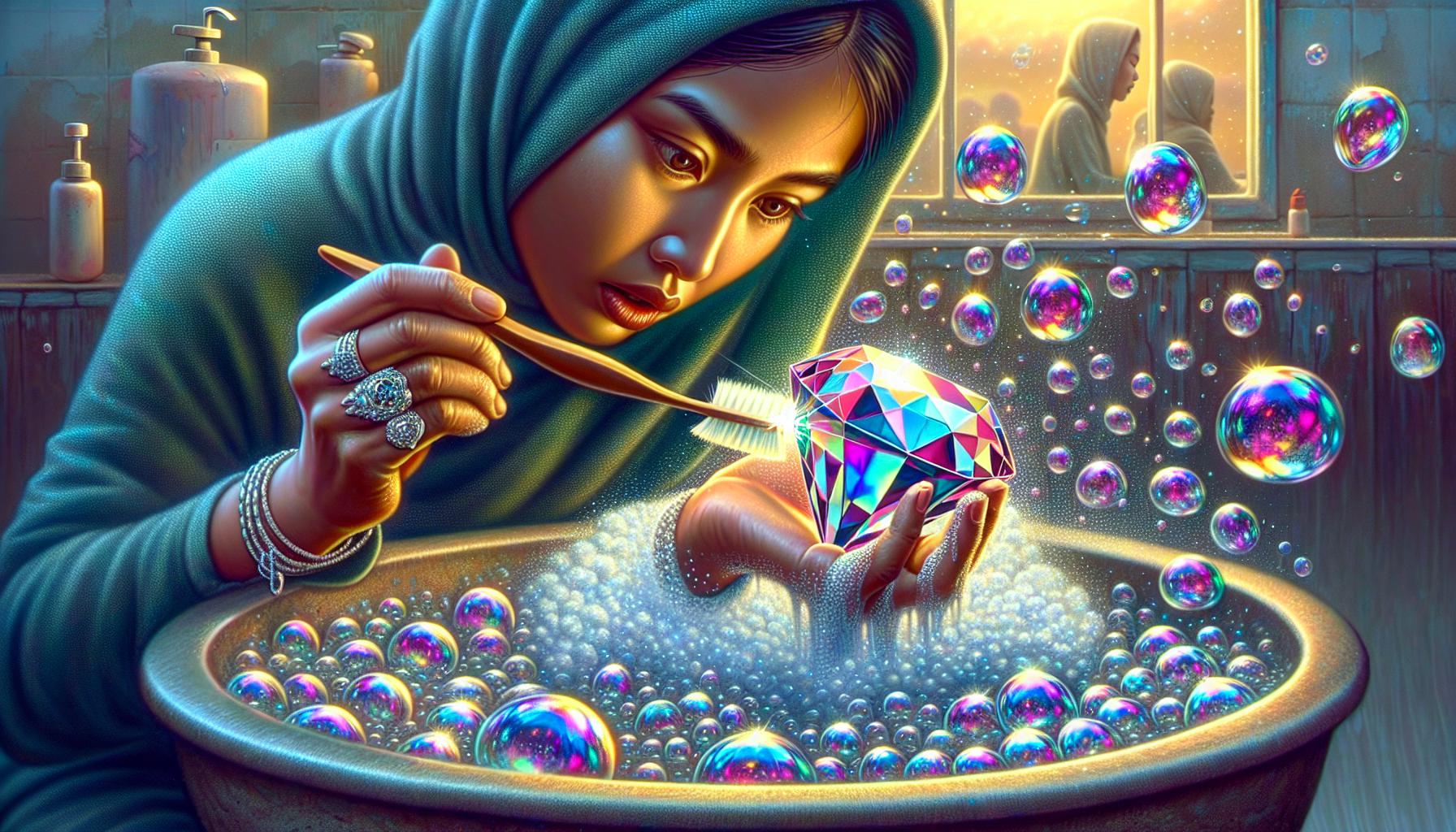
Whether you’ve unearthed a rough zircon or acquired a polished gem, proper handling and care are crucial. Zircons are fairly durable, but they require attention to maintain their brilliance over time.
Cleaning and Storing Zircons
Regular Cleaning
Zircons attract dirt and grime, just like any other gem. To clean your zircon:
- Use lukewarm water mixed with mild soap
- Gently scrub with a soft-bristled brush, like a toothbrush
- Rinse thoroughly to remove any soap residue
- Pat dry with a lint-free cloth
Avoid Harsh Chemicals
Some cleaners can cause damage to zircons:
- Stay away from bleach or strong acids
- Chemical exposure might alter the stone’s color and damage its surface
Proper Storage Techniques
Protect your zircon from scratches and contact with other gems:
- Wrap individual zircons in soft cloth
- Place them in a fabric-lined jewelry box with compartments
- Keep zircons away from direct sunlight that could fade their color
Temperature Considerations
Sudden temperature shifts can impact zircons:
- Avoid high temperatures that can cause cracks
- Store at a stable, room temperature environment
By carefully cleaning and storing your zircons, you ensure they remain as captivating as the day you found them. Remember, while zircons are durable, they’re not indestructible. Your awareness and attentive care play vital roles in preserving their natural beauty.
Conclusion: Confirming Zircon are Real
Armed with the right knowledge and techniques, you’re now well-equipped to identify zircons with confidence.
Remember, the key lies in careful observation and applying the tests you’ve learned. Whether you’re out in the field or examining a loose stone, your newfound skills will serve you well in distinguishing genuine zircons. Keep in mind that while these methods are effective, consulting a professional gemologist will provide the final word on a gemstone’s authenticity. With practice and attention to detail, you’ll become adept at spotting these beautiful gems.
Cherish each zircon you find and treat it with the care it deserves to preserve its luster and value for years to come.


